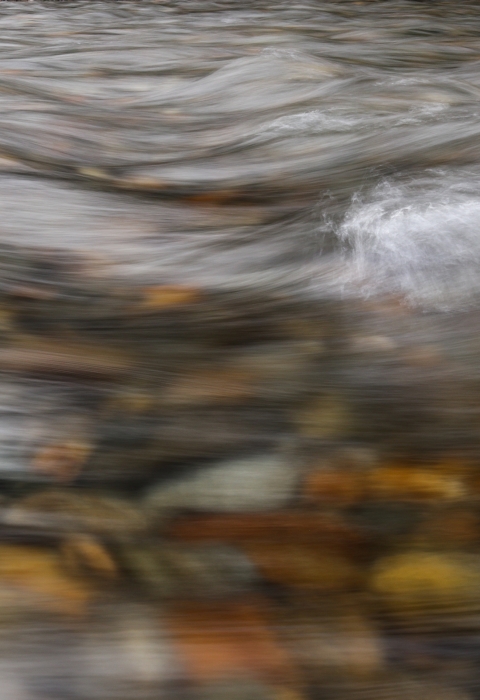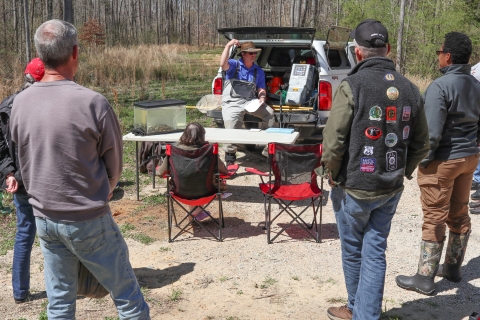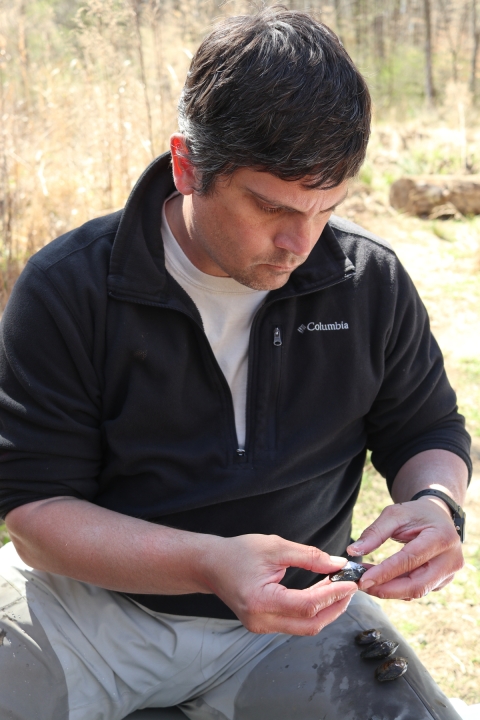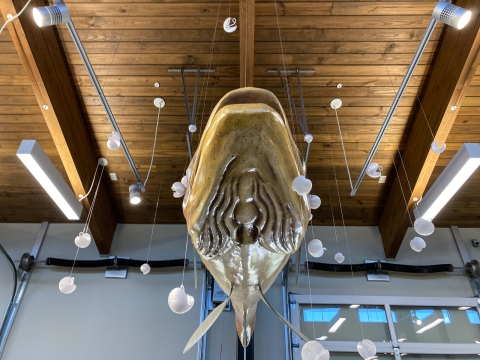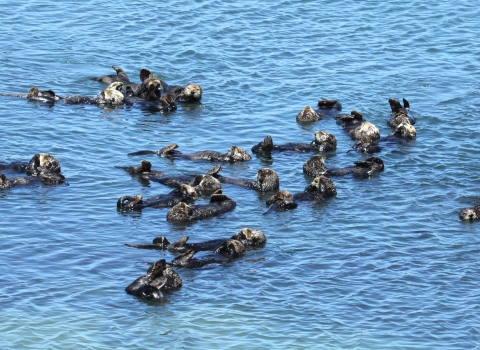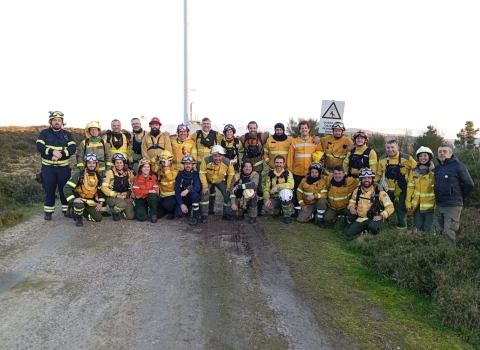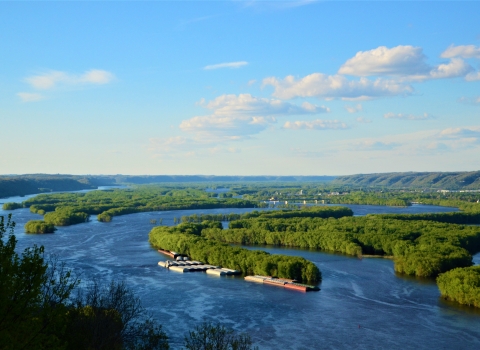Charlotte, N.C. - For most, if not all, of the workshop participants standing on the bank of Stevens Creek, in North Carolina’s Mecklenburg County, it was the first time they had held a freshwater mussel in their hand. Much less one fitted with a tag giving it a unique identifying number/letter combination, just like the chip one might put in a pet in case it gets lost.
Mecklenburg County’s new Stevens Creek Nature Center sits on the edge of the Goose Creek watershed, home to the endangered Carolina heelsplitter mussel. On a recent clear but windy Saturday in March, U.S. Fish and Wildlife Service biologists turned out to help with the nature center’s first mussel-centric public program, with great success. For the workshop, nature center director Kristen Haas, and UNC-Charlotte’s Christine Biela, provided a classroom discussion on mussels and stream health. This was followed by a visit to Stevens Creek, where Morgan Long of the Catawba Riverkeeper, led the group in stream invertebrate collection and identification, and Service biologists Jason Mays and Gary Peeples discussed mussels and the work on Stevens Creek, culminating with participants helping stock 268 new mussels into the creek, including 24 outfitted with identification tags allowing biologists to find them in the future, providing an indication of the stream’s stability.
Freshwater mussels are a group of animals whose importance is perhaps matched by how little the general public knows about them or is even aware of them. The United States is a global epicenter of freshwater mussel diversity, home to about 300 species, though 65% of those are imperiled. If we needed a reason to care about them, they literally clean the water by filtering stream water as they feed. They’re also indicators of stream health – the presence of vibrant native mussel populations typically means a healthy stream.
Perhaps nowhere are efforts to educate people about freshwater mussels more on display than Stevens Creek Nature Center. From the ceiling hangs a six-foot model of a normally 5 ½ inch pirate perch, surrounded by mussel larvae. Below the fish is a vastly oversized model of a mussel and its anatomy. Nearby is an aquarium that will soon come online, complete with flowing water, giving a glimpse of what stream life looks like in the area. The room is filled with the interpretive displays and hands-on activities you would expect at a nature center, but here the focus is overwhelmingly about the stream.
The nature center sits on a 281-acre nature preserve that includes a recently restored reach of Stevens Creek, the result of a partnership between the Service and the city of Charlotte. The restoration included many typical techniques used to keep stream banks from eroding, but it also included a layer of geocell – think of an oversized, fabric honeycomb - along the stream bottom. A vibrant community of stream animals begins with the insects and other invertebrates living on the stream bottom. The cells of the geocell layer fill with sand, gravel, and rock, which are held in place by the fabric, providing the habitat stability needed for bottom-dwelling animals to succeed.
With the stream restoration addressing the physical issues of the stream, Mays worked with the state of North Carolina and the nature center to stock the reach with common mussels from neighboring streams to create a vibrant, diverse mussel community that could one day pave the way for putting endangered Carolina heelsplitters in the stream.
